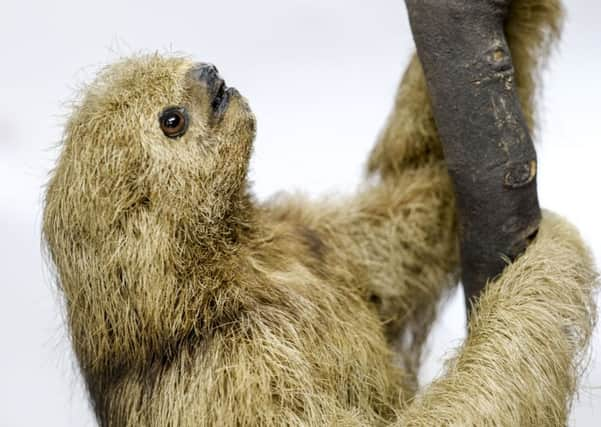Exhibit of the Week: Maned sloth


Sorry, we couldn’t resist. Google synonyms for ‘sloth’ – it’s one of the seven deadly sins – and you’ll be offered, for starters, lazy, idle, indolent, work-shy, inactive, inert, sluggish, apathetic, lethargic, listless, languid, torpid, slow-moving, slow, heavy, dull, enervated, shiftless and lackadaisical.
Does this rather fetching fellow really deserve such a barrage of accusations? He’s a maned sloth, the rarest of only four species of three-toed sloths. It’s believed that this specimen was probably brought back to this country by Colonel James Harrison of Brandesburton Hall near Beverley, one of that breed of Edwardian travellers and big game hunters who shamelessly ransacked the natural world across the globe.
Advertisement
Hide AdAdvertisement
Hide AdMany of the specimens he gathered during his wide-ranging travels are in the Scarborough Collections, having been donated by his widow in 1923.
Colonel Harrison is known to have visited Brazil in 1885, which is the only place where the maned sloth is found. It gets its name from the long ‘mane’ of black hair which covers its neck and shoulders. Like the rest of the sloth family, it has long limbs, a squat body and a stumpy tail. Its coarse, shaggy fur grows in the opposite direction to that of most mammals; from the stomach to the back. This cream and brown fur is more often than not tinged green, due to an algae which colonises the grooves in the thick hair – and the extraordinary cycle of events linked to that algae was only discovered recently.
It seems that sloths are slow in more ways than one – as well as generally travelling no faster than eight feet per minute, they have remarkably slow metabolisms, descending to the forest floor to defecate just once a week. This act leaves them temporarily vulnerable to predators, but also allows them to pick up the larvae of a species of moth which then lives in the fur – some animals have been found to be harbouring up to 120 moths and other insects.
When the moths die, they decompose in the fur, and provide essential nutrients for the algae – which not only gives the sloth camouflage in its treetop habitat, but also extra nutrients via absorption through the hair and skin to top up the sloth’s essential vegan diet. Isn’t nature amazing?
Advertisement
Hide AdAdvertisement
Hide AdAll sloths, whether two- or three-toed, have long curved claws, up to four inches in length, which have evolved to help them hook themselves onto tree branches. And one more fascinating sloth fact you probably didn’t know: three-toed sloths also have an additional vertebra, which elongates their neck, allowing remarkable flexibility of the movement of the head: they can visually sweep their surroundings through 270 degrees.
The maned three-toed sloth is one of the rarest species of sloth, although the Red List (the International Union for Conservation of Nature’s register of threatened species) reassessed its status and downgraded it from Endangered to Vulnerable nearly 10 years ago. There are very few examples of it in museums worldwide, so this one, from the Scarborough Collections, is important.
So, to return to our earlier question – does the sloth deserve its reputation for lethargy? Not when it’s got the right motivation, it seems – take a look here to see wonderful footage from the recent TV programme Planet Earth of another three-toed sloth, a pygmy, swimming, admittedly rather ponderously, in search of a mate: http://www.bbc.co.uk/news/entertainment-arts-37606747
The maned sloth is part of the Scarborough Collections, the name given to all the museum objects and artwork acquired by the borough over the years, and now in the care of Scarborough Museums Trust. For further information, please contact Collections Manager Jennifer Dunne on [email protected] or 01723 384510.